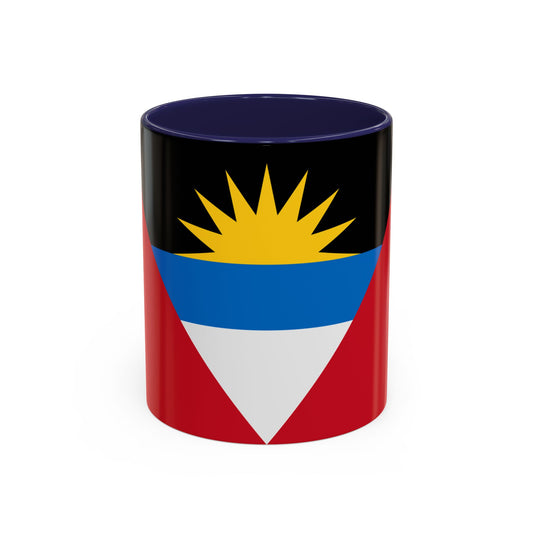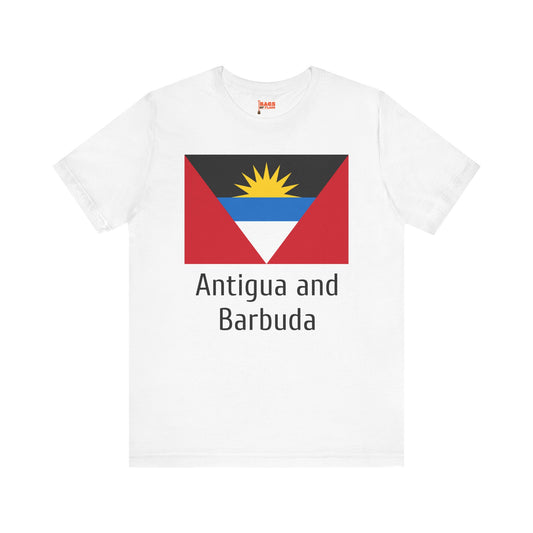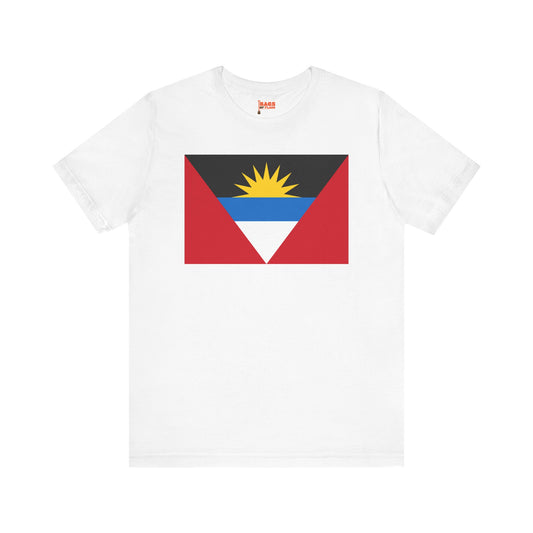-
Antigua and Barbuda Pillow
Regular price $22.65 USDRegular priceUnit price / per -
Antigua and Barbuda Backpack
Regular price $59.79 USDRegular priceUnit price / per -
Antigua and Barbuda Leather Patch Hat
Regular price $18.85 USDRegular priceUnit price / per -
Antigua and Barbuda Sweatshirt
Regular price $34.15 USDRegular priceUnit price / per -
Antigua and Barbuda Flag Sweatshirt
Regular price $34.15 USDRegular priceUnit price / per -
Antigua and Barbuda Mug
Regular price $11.65 USDRegular priceUnit price / per -
Antigua and Barbuda Trucker Cap
Regular price $14.90 USDRegular priceUnit price / per -
Antigua and Barbuda Hoodies
Regular price $34.40 USDRegular priceUnit price / per -
Antigua and Barbuda T-shirts
Regular price $22.79 USDRegular priceUnit price / per -
Antigua and Barbuda Flag on Hoodie
Regular price $34.40 USDRegular priceUnit price / per -
Antigua and Barbuda Flag on T-shirt
Regular price $22.79 USDRegular priceUnit price / per
Collection: Antigua and Barbuda
The Antigua and Barbuda flag symbolizes the nation's pride and identity. It has a rich history and deep symbolism that reflects the country's culture and heritage. We will explore the intriguing facts and protocols surrounding the Antigua and Barbuda flag.
Overview of the Antigua and Barbuda Flag's Design and Colors

The Antigua and Barbuda flag features a distinctive and striking design that immediately captures the eye. Its background is a vivid red, symbolizing the vitality and spirit of the nation. Dominating the left side of the flag is an inverted isosceles triangle that houses further symbolic elements. Within this triangle, two parallel horizontal stripes can be found: a black stripe on the upper half and a light blue stripe below it. Completing the design is a white-bordered, golden sun rising from the black stripe, adding a unique touch to the flag’s overall appearance.
The golden sun consists of sixteen rays, each spreading outward, representing the dawn of a new era. These specific colors—red, black, blue, white, and gold—were chosen for their visual impact and deep symbolic meanings, which intertwine the nation's heritage, aspirations, and natural beauty. With its vibrant colors and symbols, this flag serves as a daily reminder of the country's identity, struggles for freedom, and hopes for the future.
Historical Context Surrounding the Flag
The flag of Antigua and Barbuda was officially adopted on February 27, 1967, a key moment that underscored the nation's journey toward sovereignty. This significant date marked the birth of a new symbol for the islands as they navigated their way from under British colonial rule towards independence, which was fully realized in 1981. Sir Reginald Samuel led the creation of the flag, whose design was selected to encapsulate the spirit, culture, and aspirations of the people of Antigua and Barbuda.

The period leading up to the adoption of the flag saw intense discussions about national identity, heritage, and the country's future direction. These conversations were instrumental in shaping the final design of the flag, ensuring it reflected the collective hopes and the rich historical tapestry of the nation. The flag's introduction was more than just a ceremonial change; it represented a break from the colonial past, signifying the dawn of a new era and the beginning of the country's journey as a sovereign state.
Symbolism Embodied in the Flag
Each element of the Antigua and Barbuda flag carries a wealth of meaning, carefully chosen to represent the nation's spirit, history, and aspirations. The vibrant red that dominates the flag's background symbolizes the dynamism and lifeblood of the people, reflecting their vivacity and resilience.
The black stripe prominently positioned within the inverted triangle speaks to the African descent of much of the population, acknowledging the roots and cultural heritage that have shaped the nation's identity. Below the black, the light blue stripe mirrors the hope that permeates the country's outlook and its relationship with the surrounding Caribbean Sea, highlighting the natural beauty and serenity of the islands' maritime setting.
Central to the flag, the rising golden sun with its sixteen rays illuminates a path towards growth and enlightenment, symbolizing the emergence of Antigua and Barbuda as a sovereign state stepping confidently into a new dawn.
This powerful imagery of the sun captures the optimism and boundless opportunities for the nation. The inclusion of white around the sun not only enhances its brilliance but also signifies the ideals of fairness, unity, and freedom that are foundational to the country's ethos. Together, these elements encapsulate the pride, heritage, and forward-looking ambition of Antigua and Barbuda, making the flag a deeply significant emblem for its people.
The Current Relevance of the Antigua and Barbuda Flag
Today, the Antigua and Barbuda flag remains a prominent fixture in the nation's life, frequently seen at government buildings, educational institutions, and public spaces, symbolizing national pride and unity. It plays a central role during key national celebrations such as Independence Day, when the country reflects on its journey and achievements.
Additionally, the flag is integral to military parades, where it is displayed with honor, underscoring its importance as a symbol of sovereignty and the sacrifices made for the country's freedom. Beyond official ceremonies, the citizens embrace the flag in various forms, from clothing to accessories, demonstrating their connection to the nation's heritage and identity. While debates regarding its design and the need for modernization have surfaced, these discussions highlight the flag’s relevance in contemporary discourse, underserving its role as a living symbol that evolves with the nation’s narrative.
Additional Facts and Unique Protocols for the Flag
The Antigua and Barbuda flag is governed by a set of protocols that emphasize its significance and ensure its respectful presentation. Paramount among these is the protocol that the national flag should always occupy the position of highest honor; when displayed alongside other flags, it must be positioned centrally and at the highest point. This is a testament to its supreme importance as a symbol of national identity and sovereignty. When raising or lowering the flag, it is customary for all onlookers to observe a moment of respect by standing at attention, which underscores the gravity and solemnity of the flag as a national emblem.
Additionally, the flag must never be allowed to touch the ground or be displayed in a condition that could be deemed disrespectful, such as being tattered, faded, or otherwise damaged. Such stipulations ensure the flag's dignified presentation, reflecting the pride of the Antigua and Barbuda people. In terms of care, the flag should be folded neatly when not in use, following a prescribed manner that honors its symbolism and importance.
During times of national mourning, the flag is flown at half-mast as a sign of grief and respect for the deceased, particularly for figures of national significance. This practice further illustrates the flag's role in the nation's collective expressions of sorrow and remembrance.
These protocols not only guide the physical handling of the flag but also instill a sense of reverence and national pride among the citizens of Antigua and Barbuda, fostering a deeper connection with their national symbol.






















